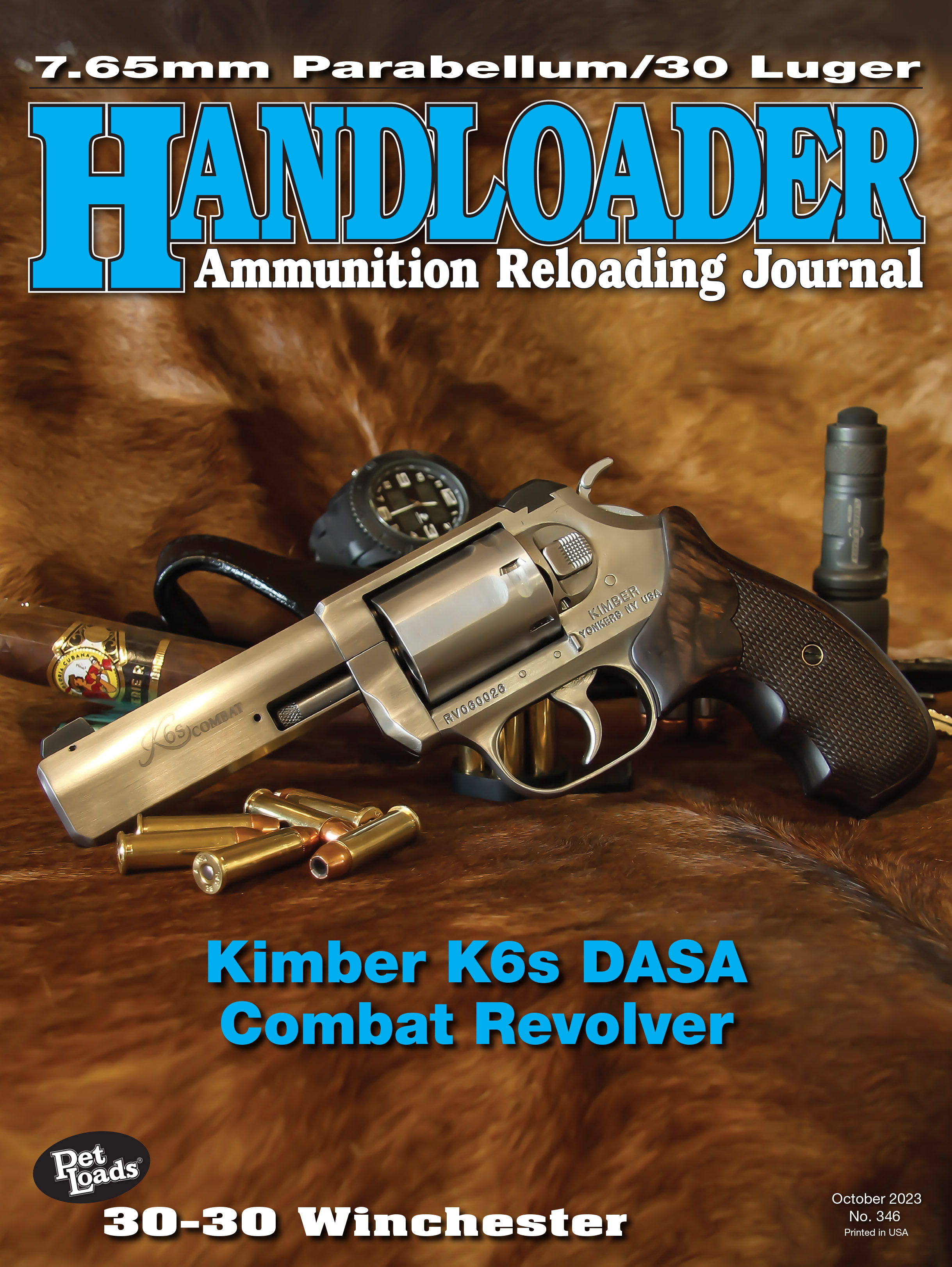Daniel Wesson is credited with designing the first totally self-contained metallic cartridge in the U.S. It was a 22 caliber, first called the No. 1 and later, the 22 Short. A small seven-shot revolver was available to fire it in 1857.
Why did Wesson and his partner, Horace Smith, choose a small, underpowered revolver that had no military application to introduce their cartridge? Because both Smith and Wesson had been involved in gun design and manufacture for most of their adult lives. They knew where profit was to be made and it wasn’t from a king’s armies riding around killing their neighbors. It was ordinary citizens who had decided to protect themselves from the robbers, street criminals and home invaders that are allowed to thrive in certain environments… and you thought this was just a recent situation!
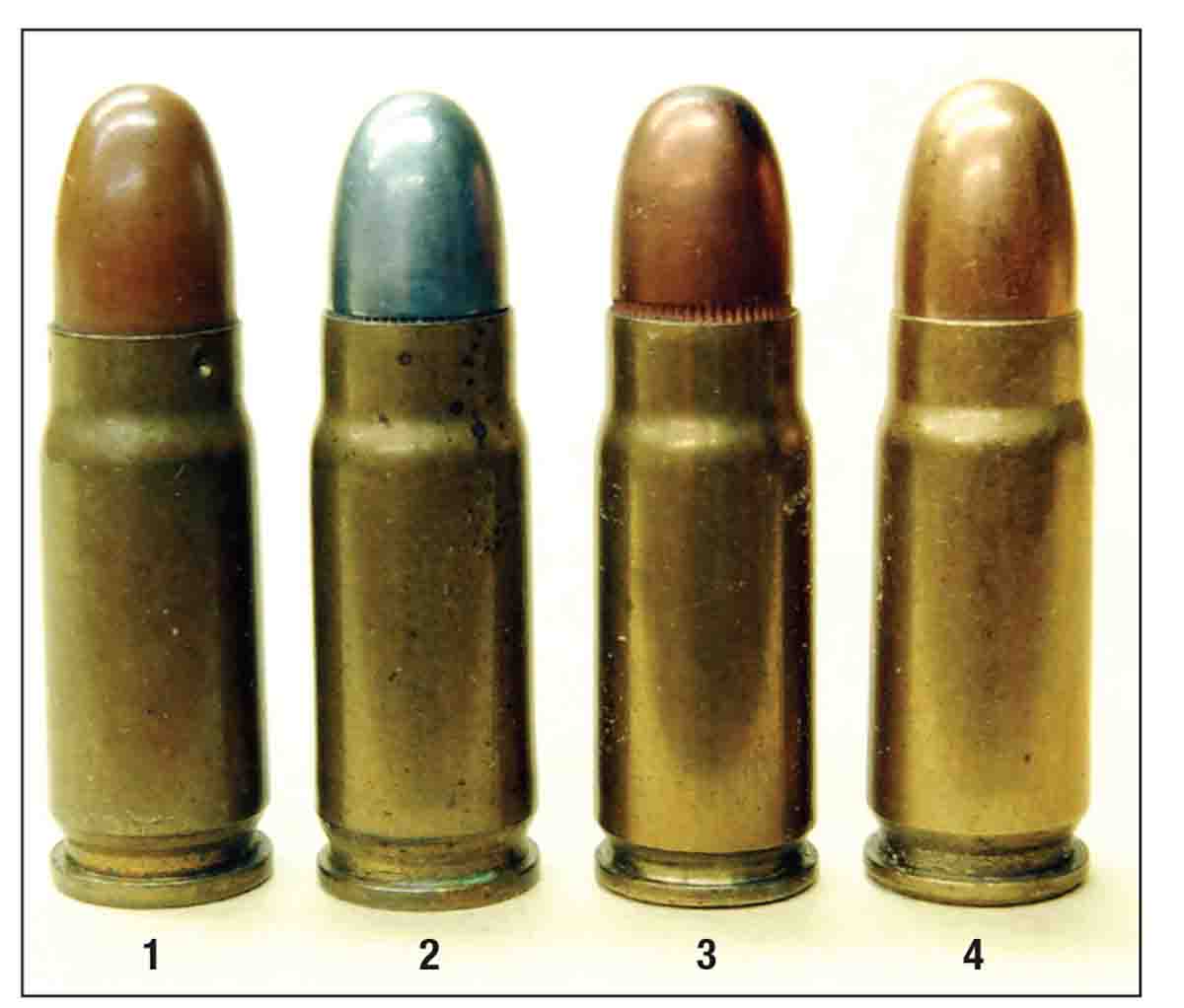
Ancestors of the 30 Luger are the: (1) 7.65mm Mannlicher, (2) 7.65mm Borchardt, (3) 7.63mm Mauser and (4) 7.62mm Tokarev. All are the same physical size, but loaded to different pressures.
Heavy, hard-kicking, large-caliber guns were not wanted by folks who had no other interest in firearms. The introduction of the 32 Long rimfire by Smith & Wesson (S&W) in 1861 soon had the company selling all the little revolvers it could make. The appearance of centerfire ignition with its improved reliability made the small revolvers even more popular.
Of course, .40- to .45-caliber cartridges fired from larger, heavier revolvers were soon available. Purchases were either military or folks (both good and bad) who were relatively certain they were going to have to use the gun on either people or large animals. However, sales never approached that of the little 22, 32 and 38 revolvers or derringers.
When smokeless powder began to replace black powder around 1890, the 32 and 38 S&W were among the first converted, indicating just how popular were the guns firing them. The largest caliber rounds were eventually converted, but even then, smokeless was still too erratic to safely duplicate the most powerful .44- and .45-caliber black-powder loadings. Thus, black powder continued on for several years in these revolver rounds.
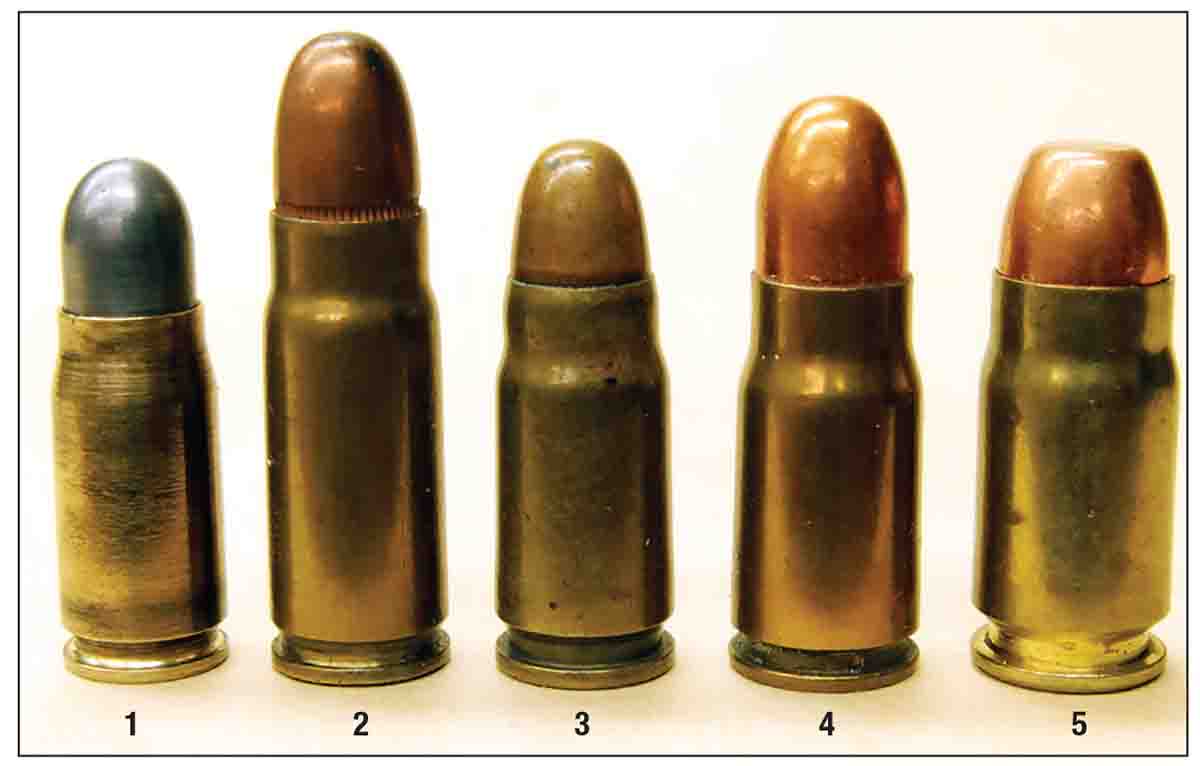
Bottleneck cartridges used in early automatics are the: (1) 7mm Japanese Nambu, (2) 7.63mm Mauser or 30 Mauser, (3) 7.65mm Parabellum or 30 Luger, (4) 8mm Japanese Nambu and today’s (5) 357 SIG.
At this same time, the militaries of Europe could see the advantages of smokeless powder in rifles and wanted the same smaller bullet, higher velocity and lighter recoil in its handguns. Some were even adopting smaller black-powder rounds, believing the new smokeless rifles, and especially carbines, were so effective and easy to reload that there was little need for a handgun! Even the U.S. cashiered the military effective 45 Colt for the useless 38 Long Colt in 1892, the same year the Krag rifle, firing the smokeless .30-40 Krag cartridge was adopted.
It was in this 1890 environment that gun designers Borchardt, Maxim, Schwarzlose, Mannlicher, the Feederle brothers (for Mauser), Luger, Browning and many others, worked to create the modern semiautomatic handgun with detachable magazine. The first commercial gun was the Borchardt Model 1893. It was strange-looking, but it worked and was actively marketed to both militaries and civilians by its producer, Ludwig Loewe and Companies in Berlin. The cartridge it fired was a short, rimless, bottlenecked round called the 7.65mm Borchardt. The bullet diameter was .308 inch and it seemed to appear out of nowhere. The Loewe company owned a large portion of both Mauser and the great ammunition maker DWM, so it seems logical that DWM created the smokeless cartridge to meet Hugo Borchardt’s requirements.
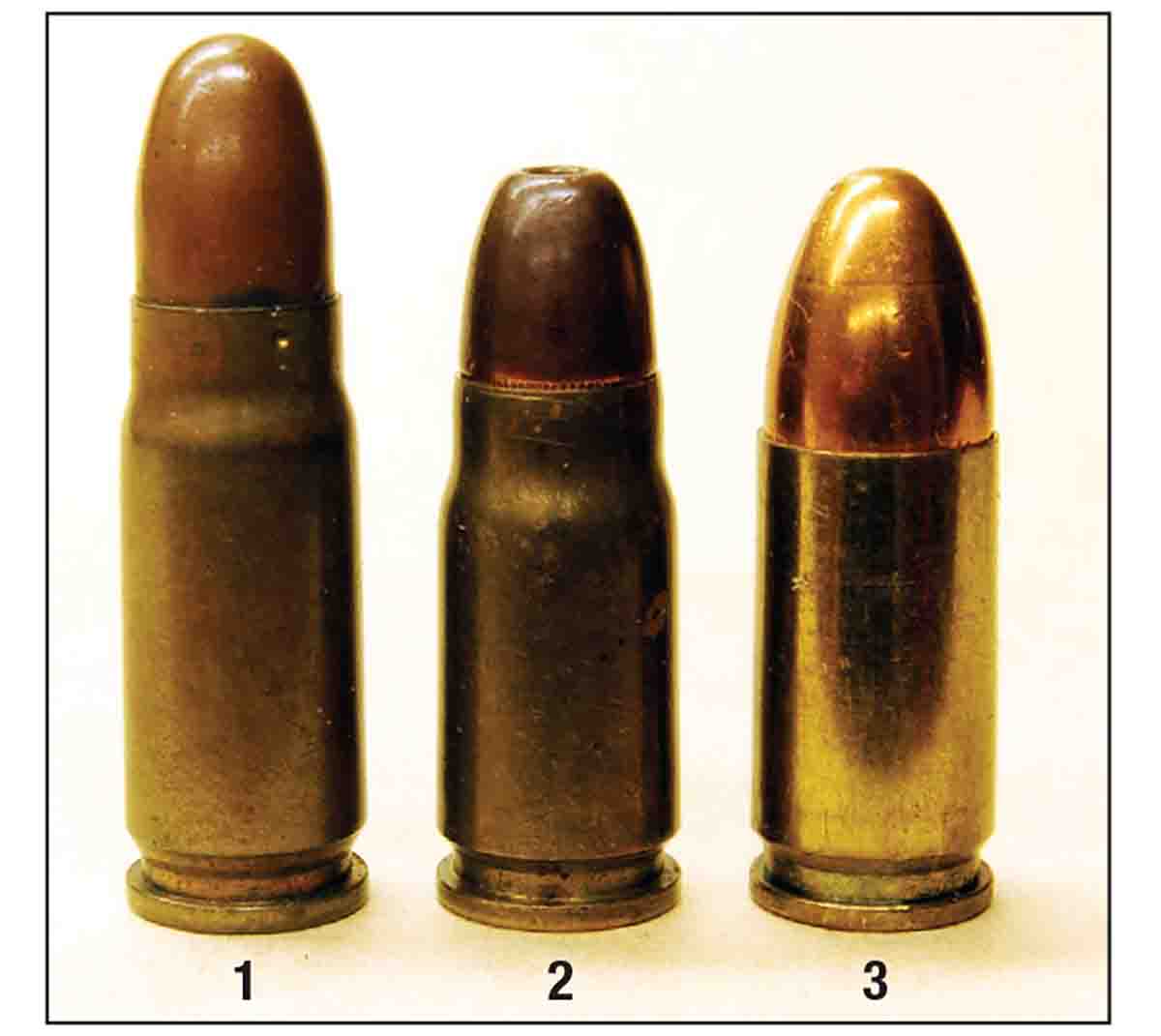
The 7.65mm Borchardt (1) was shortened to 7.65mm Parabellum or 30 Luger (2) to fit the new Luger magazine and grip frame. A 9x19mm Luger (3) is shown for comparison.
Of interest to us here is that the 7.65mm Borchardt was also used in pistol designs by Mannlicher and Mauser, but loaded to different pressure levels. In 1932, it even became the 7.62x25mm Tokarev. As a result, the cartridge has been listed by at least 14 different names. Bullet weights ranged from 80 to 91 grains with velocities from about 1,100 to 1,400 feet per second (fps). Only ammunition loaded for the specific pistol was to be fired in it. The energy was about 30 percent greater than today’s 32 H&R Magnum. Here in the U.S., the cartridge was simply called 30 Mauser. It was loaded from 1900 to 1970 by Winchester while Remington dropped it in 1968.
All the foregoing history of handgun development led directly to the performance characteristics displayed by the 30 Mauser round. Unfortunately, while several countries liked the cartridge, nobody liked the pistol firing it. The Borchardt was too heavy, too ungainly and too fragile for military use. Other designs were much the same, at least in the early years.
DWM quickly assigned Engineer Georg Luger to alter the Borchardt design – and what a job he did! The result was the now world-famous Luger pistol. The mainspring, however, was located in the grip along with the magazine. This meant the 7.65mm Borchardt cartridge had to be shortened a bit to prevent the grip from being too large. In 1900, a new cartridge called the 7.65mm Parabellum, or 30 Luger, was the result. The new round looked exactly like the 7.65mm Borchardt, only .15 inch shorter.
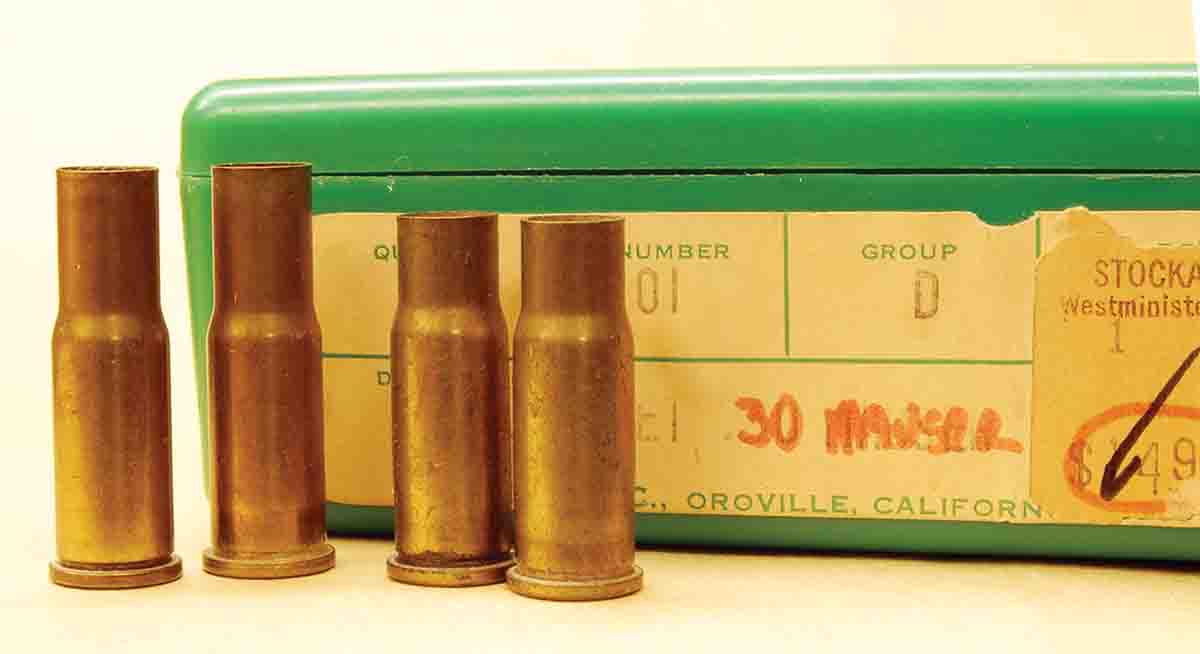
Little wildcat rounds from the 1960s included the 38 Special and 357 Magnum cases formed in 30 Mauser or 30 Luger full-length sizing dies.
It was not possible for the new cartridge to duplicate the ballistics of the longer 30 Mauser, but the Luger pistol could handle higher pressure to make up some of the difference. While the 30 Mauser pushed an 86-grain bullet to 1,400 fps from a 5.5-inch barrel, yielding 375 foot-pounds of energy, the new 30 Luger used a 93-grain bullet at 1,275 fps, giving 350 foot-pounds at the end of a 4.5-inch barrel. Both Winchester and Remington loaded the 93 grain in full patch, softpoints and hollowpoint to 1,220 fps with 305 foot-pounds of energy.
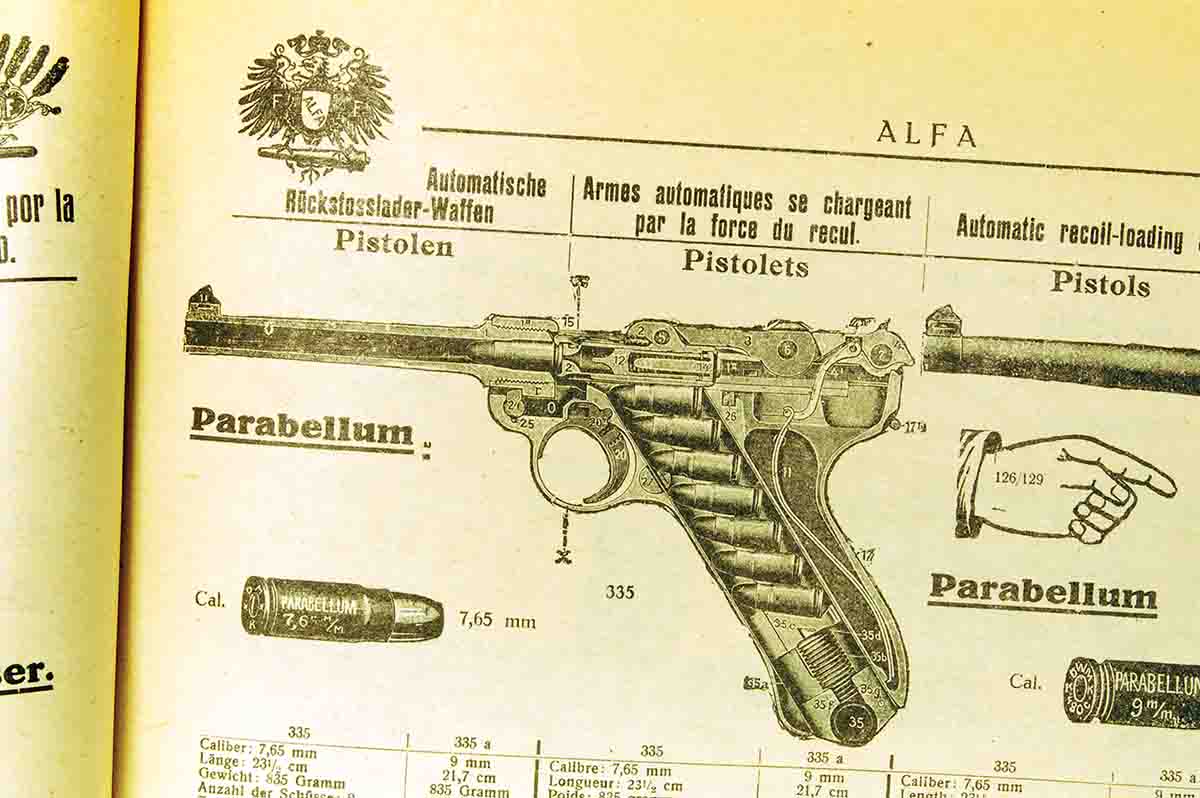
A 1910 advertisement for the Luger pistol in 7.65mm Parabellum.
How many various pistols were made chambering the 30 Luger will never be known. Lugers were available right up until World War II. Submachine guns were also made. The number must have been large because Remington loaded the 30 Luger up until 1977. Winchester listed ammunition from 1902 until 2019. Handloaders keep the cartridge alive today. Jacketed bullets are listed but hard to find as are commercial cast offerings. Empty cases would seem to be the hard part, but Starline lists them and has them in stock as I write this column.
I must admit to having a soft spot for the 30 Luger. My dad had a Luger in 7.65mm when I was a kid in the 1950s. Every so often, he would come out of the house carrying his Mauser 22 rimfire rifle and the Luger. There would be boxes of trash in the back of the truck, as we were going to the dump. This was rural Illinois where local farmers and one small town dumped everything they didn’t want in a several-acre low spot at the end of some vacant land. The place had a large rat population.
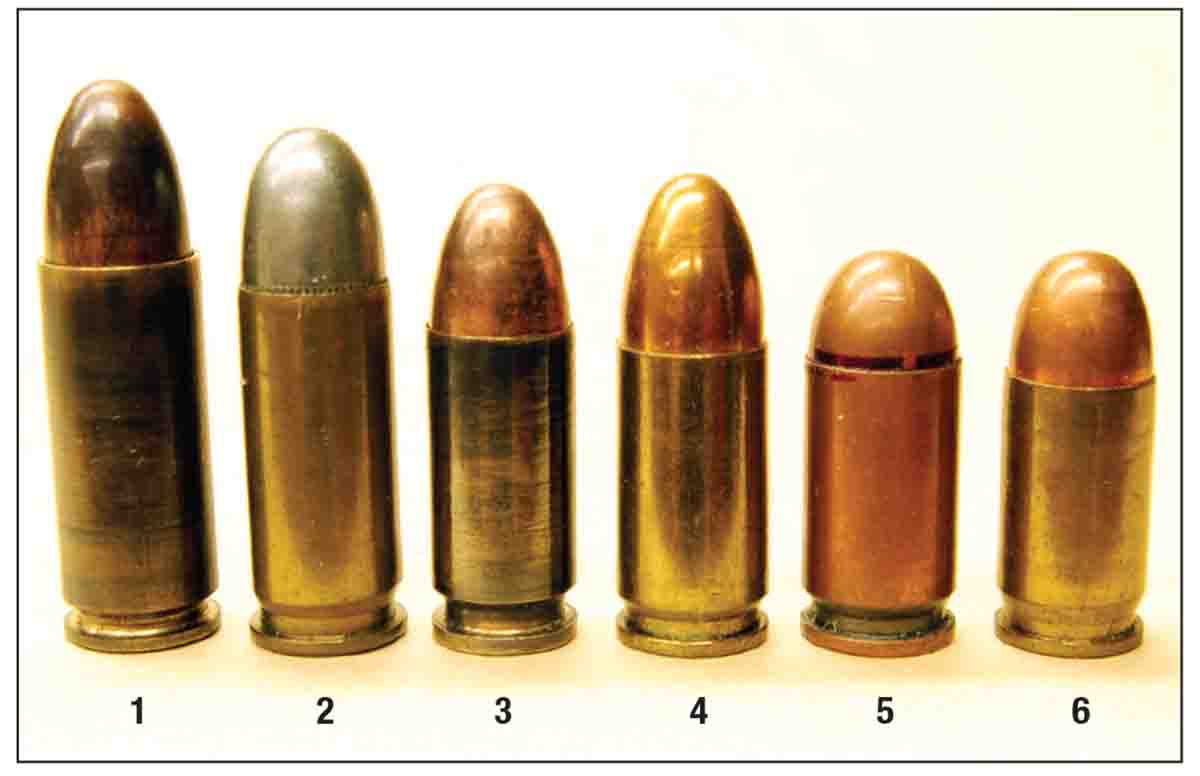
These are 9mm rounds that quickly dominated the semiauto pistol field: (1) 9x25mm Mauser, (2) 38 ACP, (3) 9mm Browning Long, (4) 9x19 mm Luger, (5) 9mm Makarov and (6) the 9mm Browning Short or 380 ACP.
The Luger had a longer barrel than the “war trophy” guns I saw at our gun club. Its front sight was a narrow flat-topped post that probably wasn’t original. The bullet hit right on the top of the post at about 50 paces. If the hold was good, the light recoil and flat trajectory made hitting easy, especially if the rat exposed its whole front half. It was even possible to hit them farther out if they sat up and there was snow on the ground as these things were the size of small cats.
The ammunition must have been military because it came from a large wooden box in the basement containing little square boxes of 25 rounds each. We spent many a sunny winter afternoon popping rates with the Luger. It’s certain Georg Luger never thought of this use for his light-recoiling little handgun, but to paraphrase somebody or another, “Thanks for the memories, Georg.”
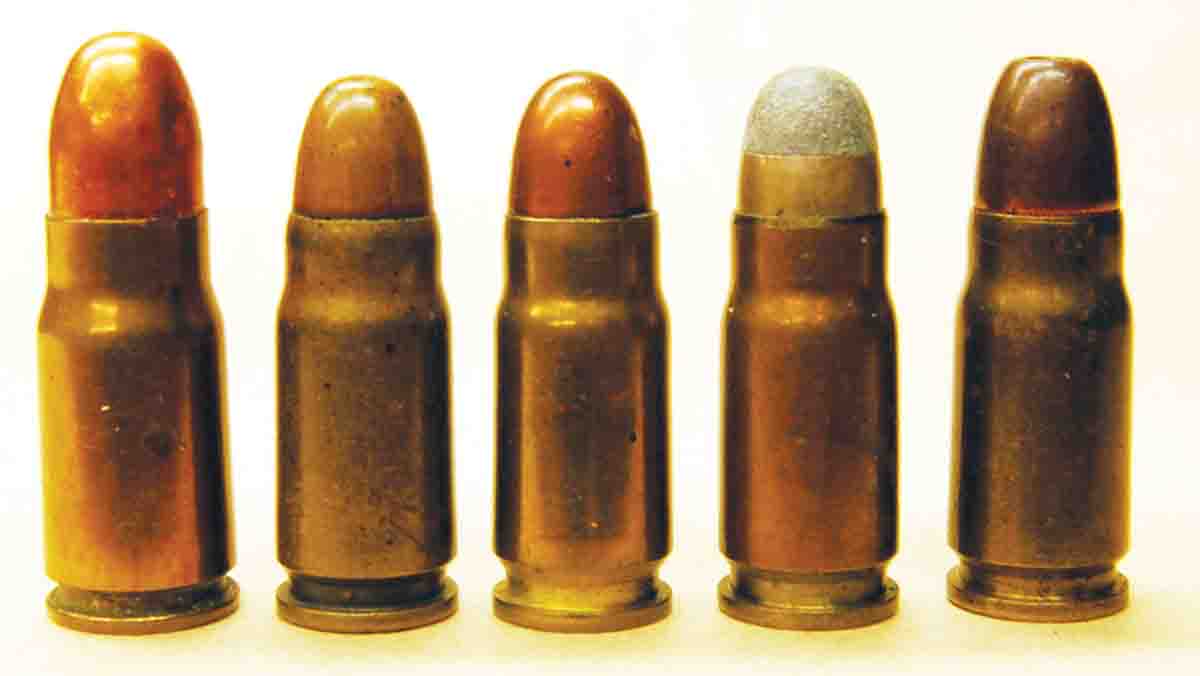
The 1893 Borchardt design led directly to the Luger as we know it today.
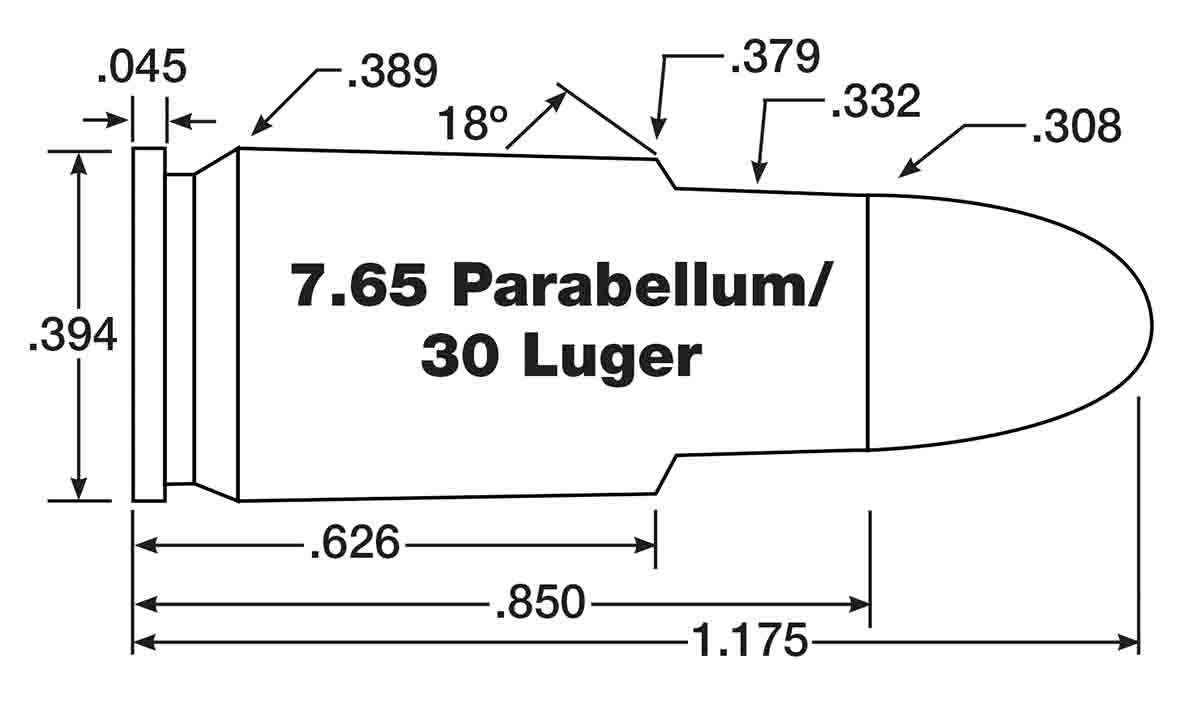







.jpg)


